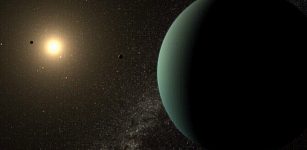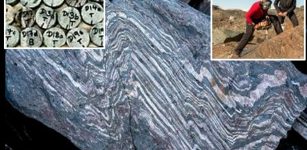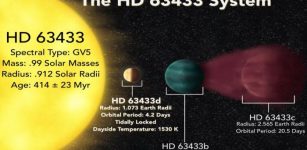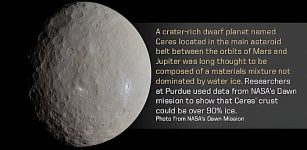Most Detailed Weather Report From Distant Alien Worlds – Created
Eddie Gonzales Jr. – MessageToEagle.com – Astronomers have produced a detailed weather report for two distant worlds. The groundbreaking study reveals extreme conditions on these worlds, featuring swirling hot sand clouds and temperatures reaching 950°C (1, 742°F).
An artist’s impression of the nearest brown dwarf to Earth, WISE 1049AB (pictured main). Credit: ESO-I. Crossfield-N. Risinger. Inset: An impression of the stormy weather on a brown dwarf planet. Credit: NASA. Secondary Creator Credit: NASA—JPL-Caltech—University of Western Ontario—Stony Brook University—Tim Pyle
Researchers used NASA’s James Webb Space Telescope to observe weather patterns on two brown dwarfs, objects larger than planets but smaller than stars.
WISE 1049AB, brown dwarfs 6 light-years away, are the brightest and closest of their kind to Earth.
The team measured light waves from brown dwarfs’ surfaces to track atmospheric changes as cloudy regions rotated in and out of view. Using light curves, they created 3D models of weather patterns over a full rotation (5-7 hours), revealing detailed atmospheric dynamics.
The team plotted light variations by wavelength, revealing complex atmospheric interactions of gases like water, methane, and carbon monoxide.
These findings could help astronomers understand brown dwarfs as a potential link between stars and planets, offering new insights into both.
The JWST observes infrared light, which our atmosphere blocks, enabling studies of the early universe, star formation, and exoplanets beyond our solar system.
This study expands on earlier brown dwarf research, which mostly captured static, one-sided atmospheric snapshots. This method is limited because brown dwarfs rotate quickly and their weather varies significantly over time.
Professor Beth Biller stated, “Our findings suggest we’re close to revolutionizing our understanding of distant worlds. These insights can help us comprehend conditions on brown dwarfs and giant exoplanets beyond our solar system.”
These techniques may eventually allow us to detect weather on habitable exoplanets similar to Earth.
The study, published in Monthly Notices of the Royal Astronomical Society, was led by the University of Edinburgh with researchers from from Trinity College Dublin, the University of Virginia, and other institutes from around the world.
Written by Eddie Gonzales Jr. – MessageToEagle.com Staff Writer











